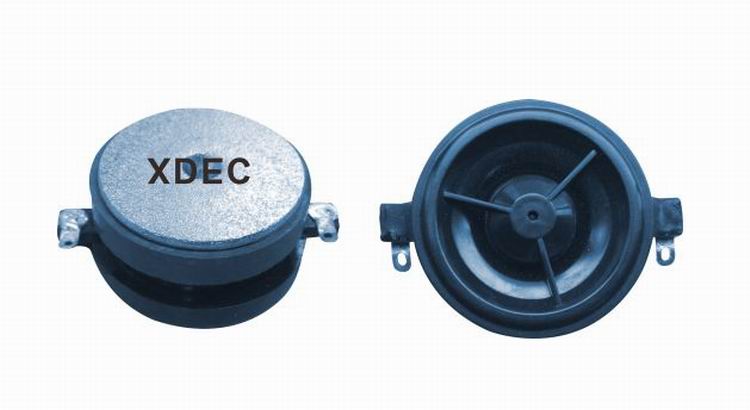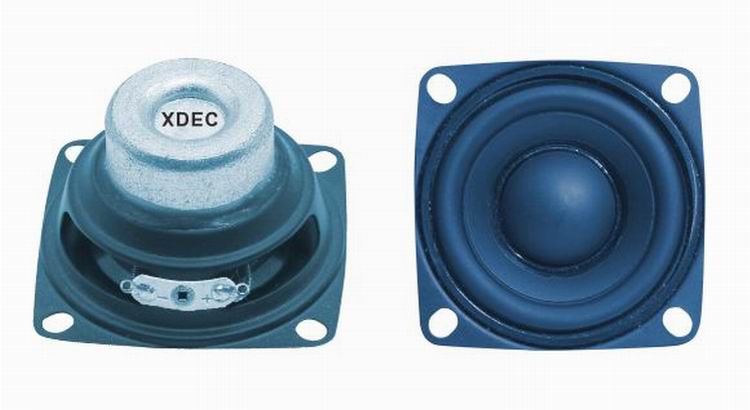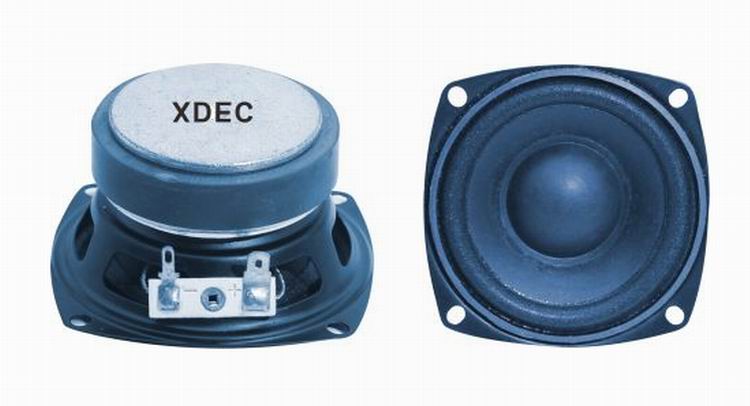1. Frequently Asked Questions in RF Radio Frequency Circuit Design
Radio frequency (RF) PCB design has many uncertainties in the current publicly published theory and is often described as a "black art." Under normal circumstances, careful planning under the premise of fully grasping various design principles is a guarantee for one-time successful design for circuits in the frequency bands below the microwave (including low-frequency and low-frequency digital circuits). For PC-type digital circuits with a frequency band above the microwave and a high frequency, 2 to 3 versions of the PCB are required to ensure the circuit quality. For RF circuits in the frequency band above the microwave, more versions of the PCB design are often needed and continuously improved, and under the premise of considerable experience. This makes it difficult to design RF power.
Interference between digital circuit modules and analog circuit modules
If the analog circuit (RF) and the digital circuit work separately, they may each work well. However, once the two are placed on the same board and work with the same power supply, the entire system is likely to be unstable. This is mainly because digital signals are frequently oscillated between ground and positive power supplies ("3 V"), and the period is extremely short, often in the order of nanoseconds. Due to the large amplitude and short switching time, these digital signals contain a large number of high frequency components independent of the switching frequency. In the analog part, the signal transmitted from the wireless tuning loop to the receiving portion of the wireless device is typically less than 1 μV. Therefore, the difference between the digital signal and the RF signal will reach 120dB. Obviously, if the digital signal cannot be separated from the RF signal well, the weak RF signal may be destroyed, and the performance of the wireless device may deteriorate or may not work at all.
Noise interference from the power supply
RF circuits are quite sensitive to power supply noise, especially for glitch voltages and other high frequency harmonics. The microcontroller suddenly sinks most of the current for a short period of time in each internal clock cycle, since modern microcontrollers are fabricated in CMOS. Therefore, assuming a microcontroller is operating at an internal clock frequency of 1 MHz, it will draw current from the supply at this frequency. If you do not use a suitable power supply decoupling, it will cause voltage glitch on the power line. If these voltage spurs reach the power supply pin of the RF portion of the circuit, it can cause a malfunction if it is severe.
Unreasonable ground wire
If the grounding of the RF circuit is not handled properly, some strange phenomena may occur. For digital circuit design, most digital circuit functions perform well even without a ground plane. In the RF band, even a short ground wire acts like an inductor. Roughly calculated, the inductance per mm length is about 1nH, and the inductance of a 10mm PCB line at 433MHz is about 27Ω. If the ground plane is not used, most of the ground will be longer and the circuit will not have the design characteristics.
Radiation interference from the antenna to other analog circuits
In PCB circuit design, there are usually other analog circuits on the board. For example, many circuits have analog-to-digital conversion (ADC) or digital-to-analog converters (DACs). The high frequency signal from the antenna of the RF transmitter may reach the analog input of the ADC. Because any circuit line can emit or receive RF signals like an antenna. If the processing at the ADC input is unreasonable, the RF signal may self-excite within the ESD diode of the ADC input, causing ADC bias.
2. RF circuit design principles and solutions
RF layout concept
When designing an RF layout, the following general principles must be prioritized:
(1) Separate the high-power RF amplifier (HPA) from the low-noise amplifier (LNA) as much as possible, simply by keeping the high-power RF transmit circuit away from the low-power RF receive circuit;
(2) Ensure that there is at least one whole piece of high power area on the PCB, preferably no vias on it. Of course, the larger the area of ​​the copper foil, the better;
(3) Circuit and power supply decoupling are also extremely important;
(4) The RF output usually needs to be far from the RF input;
(5) Sensitive analog signals should be as far away as possible from high-speed digital and RF signals.
Physical partitioning and electrical partition design principles
Design partitions can be broken down into physical partitions and electrical partitions. Physical partitioning mainly involves component layout, orientation, and shielding; electrical partitioning can continue to be broken down into partitions for power distribution, RF traces, sensitive circuits and signals, and grounding.
Physical partitioning principle
(1) Principle of component position layout. Component layout is the key to achieving an excellent RF design. The most effective technique is to first fix the components on the RF path and adjust their orientation to minimize the length of the RF path, keep the input away from the output, and as far as possible. Ground high power circuits and low power circuits.
(2) PCB stack design principles. The most efficient method of board stacking is to arrange the main ground plane (main ground) in the second layer below the surface layer and place the RF lines on the surface layer as much as possible. Minimizing the via size on the RF path not only reduces path inductance, but also reduces the number of solder joints on the primary ground and reduces the chance of RF energy leaking into other areas of the laminate.
(3) RF device and its RF wiring layout principles. In physical space, linear circuits like multistage amplifiers are usually sufficient to isolate multiple RF regions from each other, but duplexers, mixers, and IF amplifiers/mixers always have multiple RF/IFs. The signals interfere with each other, so care must be taken to minimize this effect. The RF and IF traces should be crossed as much as possible, and as much as possible between them. The correct RF path is important to the performance of the entire PCB, which is why component placement typically takes up most of the time in cellular phone PCB design.
(4) Design principles for reducing the interference coupling of high/low power devices. On a cellular phone PCB, it is usually possible to place the low noise amplifier circuit on one side of the PCB and the high power amplifier on the other side, and finally connect them to the RF side and baseband processor on the same side through the duplexer. On the antenna of the end. Tips are needed to ensure that the through hole does not transfer RF energy from one side of the board to the other. A common technique is to use blind holes on both sides. The adverse effects of the vias can be minimized by arranging the vias in areas where both sides of the PCB are free of RF interference.
Electrical partition principle
(1) Power transmission principle. Most circuits in cellular phones have relatively small DC currents, so wiring width is usually not an issue. However, a wide current line as wide as possible must be set separately for the power supply of the high power amplifier to minimize the transmission voltage drop. To avoid too much current loss, multiple vias are required to transfer current from one layer to another.
(2) Power supply decoupling of high power devices. If it cannot be fully decoupled from the power pin of the high power amplifier, high power noise will radiate across the board and cause a variety of problems. The grounding of high-power amplifiers is critical, and it is often necessary to design a metal shield for them.
(3) RF input/output isolation principle. In most cases, it is also critical to ensure that the RF output is kept away from the RF input. This also applies to amplifiers, buffers and filters. In the worst case, if the outputs of the amplifier and buffer are fed back to their inputs with the appropriate phase and amplitude, they are likely to generate self-oscillation. In the best case, they will work stably under any temperature and voltage conditions. In fact, they can become unstable and add noise and intermodulation signals to the RF signal.
(4) Filter input/output isolation principle. If the RF signal line has to wrap around the output of the filter, this can severely damage the bandpass characteristics of the filter. In order to isolate the input and output well, first a ground must be placed around the filter, and the lower layer of the filter is also placed in a ground and connected to the main ground surrounding the filter. It is also a good idea to keep the signal lines that need to pass through the filter as far as possible from the filter pins. In addition, the grounding of all parts of the board should be very careful, otherwise it may introduce an undesired coupling channel unconsciously.
(5) Digital circuit and analog circuit isolation. In all PCB designs, it is a general principle to keep digital circuits away from analog circuits as much as possible, and it is equally applicable to RF PCB designs. Common analog grounds and grounds used to shield and separate signal lines are generally equally important, and design changes due to negligence may result in the design being completed to be reinstated. The RF line should also be kept away from analog lines and some critical digital signals. All RF traces, pads, and components should be filled with as much copper as possible and connected to the main ground as much as possible. If the RF traces must pass through the signal lines, try to lay a layer of ground connected to the main ground along the RF traces between them. If this is not possible, make sure they are crisscrossed, which minimizes capacitive coupling while spreading as much ground as possible around each RF trace and connecting them to the main ground. In addition, minimizing the distance between parallel RF traces minimizes inductive coupling.
According to the working frequency response ranges, speakers can be classified into tweeters, mid ranges, woofers and full ranges.



FAQ
Q1. What is the MOQ?
XDEC: 2000pcs for one model.
Q2. What is the delivery lead time?
XDEC: 15 days for normal orders, 10 days for urgent orders.
Q3. What are the payment methods?
XDEC: T/T, PayPal, Western Union, Money Gram.
Q4. Can you offer samples for testing?
XDEC: Yes, we offer free samples.
Q5. How soon can you send samples?
XDEC: We can send samples in 3-5 days.
Speakers By Frequency,High Bass Speakers,Small Loudspeakers,High Frequency Speaker
Shenzhen Xuanda Electronics Co., Ltd. , https://www.xdecspeaker.com